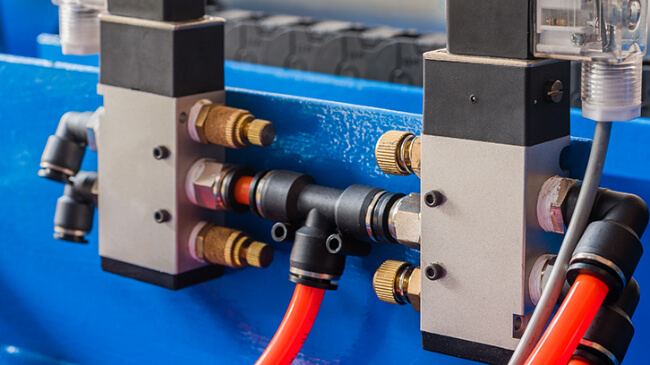Plastic injection molding is# Exploring the Basics of Plastic Injection Molding: Understanding Preforms and their Production Process
Plastic injection molding is a widely used manufacturing process in the production of plastic products. It is a process that involves the use of molten plastic to create a variety of products. In this article, I will explore the basics of plastic injection molding and focus on the production process of preforms.
Introduction to plastic injection molding
Plastic injection molding is a manufacturing process that involves the use of molten plastic to create a wide range of products. The process involves melting plastic pellets and injecting the molten plastic into a mold where it cools and solidifies to form the desired product.# Exploring the Basics of Plastic Injection Molding: Understanding Preforms and their Production Process
As a professional in the manufacturing industry, I have worked with various production processes, but one that stands out is plastic injection molding. It is an efficient and cost-effective process that involves melting plastic pellets and injecting them into a mold to create a specific shape. In this article, I will explore the basics of plastic injection molding and focus on preforms and their production process.
Introduction to Plastic Injection Molding
Plastic injection molding is a manufacturing process used to produce plastic parts in large quantities. It involves melting plastic pellets and injecting them into a mold cavity under pressure. The plastic then cools and solidifies, taking the shape of the mold. The process can be used to produce complex shapes, sizes, and designs that may be difficult or impossible to achieve using other manufacturing methods.
The benefits of plastic injection molding include high production rates, consistency in part quality, and the ability to use a wide range of plastic materials. The process is widely used in the production of consumer products, medical devices, automotive parts, and much more.
Understanding the Production Process of Plastic Injection Molding
The production process of plastic injection molding involves several steps. First, the plastic pellets are fed into a hopper and then transported to the heating chamber. In the heating chamber, the plastic pellets are melted using heat and pressure. Once the plastic is melted, it is injected into the mold cavity using a nozzle.
After the plastic is injected into the mold cavity, it is allowed to cool and solidify. Once the plastic has cooled and solidified, the mold is opened, and the part is ejected. The cycle then begins again, and the process is repeated.
Types of Molding Materials Used in Plastic Injection Molding
There are various types of molding materials used in plastic injection molding. The most common include:
- Polyethylene
- Polypropylene
- Acrylonitrile-Butadiene-Styrene (ABS)
- Polycarbonate
- Polyethylene Terephthalate (PET)
Each material has its unique properties that make it suitable for specific applications. For example, PET is commonly used in the production of plastic bottles due to its durability and ability to withstand high temperatures.
How to Make a Plastic Mold
Making a plastic mold involves several steps. First, a design is created using computer-aided design (CAD) software. The design is then used to create a mold using a precision machine. The mold is made up of two halves, and once the plastic is injected into the mold cavity, the two halves are brought together to create the final product.
The mold is typically made from steel or aluminum and is designed to withstand high temperatures and pressures. The mold must also be able to release the part once it has cooled and solidified.
What is a Preform in Plastic Injection Molding?
A preform is a partially formed plastic part that is used in the production of plastic bottles. It is typically shaped like a test tube and is made from PET. The preform is heated and stretched, and then blown into a mold to create the final bottle shape.
Preforms are an essential component in the production of plastic bottles as they allow for faster production rates and more consistent part quality. The preform is also more cost-effective than producing the bottle from scratch.
The Importance of Preforms in Plastic Bottle Production
Preforms play a critical role in the production of plastic bottles. They allow for faster production rates, more consistent part quality, and a reduction in material waste. The preform is also more cost-effective than producing the bottle from scratch.
Another benefit of using preforms in plastic bottle production is that they can be stored and transported more efficiently. The preforms take up less space than finished bottles, allowing for more significant quantities to be transported at once.
Injection Machines Used in Preform Production
The injection machines used in preform production are typically high-speed machines that can produce up to 72,000 preforms per hour. The machines are designed to melt the plastic pellets quickly and inject them into the mold cavity with high precision.
The machines are also equipped with robotic arms that can remove the finished preforms from the mold and place them onto a conveyor belt for further processing.
Advantages of Using Preforms in Plastic Injection Molding
There are several advantages to using preforms in plastic injection molding, including:
- Faster production rates
- More consistent part quality
- Reduction in material waste
- Cost-effective
- More efficient storage and transportation
Preforms also allow for more significant quantities of plastic bottles to be produced at once, making them an ideal solution for high-volume production runs.
Preform Production Process
The preform production process involves several steps. First, the PET pellets are fed into the hopper and transported to the heating chamber. In the heating chamber, the PET is melted and injected into the mold cavity to create the preform.
Once the preform has been created, it is cooled and then removed from the mold. The preform is then sent to a stretch blow molding machine, where it is heated and stretched to create the final bottle shape.
Conclusion
Plastic injection molding is an efficient and cost-effective manufacturing process used to produce plastic parts in large quantities. Preforms play a critical role in the production of plastic bottles, allowing for faster production rates, more consistent part quality, and a reduction in material waste. The preform production process involves several steps, including melting the PET pellets, injecting them into the mold cavity, and then cooling and removing the finished preform.
If you are looking for a manufacturing process that can produce high-quality plastic parts in large quantities, plastic injection molding is an excellent solution. By understanding the basics of plastic injection molding and the role that preforms play in the production of plastic bottles, you can make an informed decision about the manufacturing process that is right for your needs.


